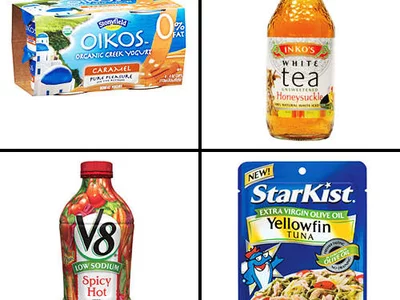Artificial sweeteners: The truth
Artificial sweeteners are now used in tens of thousands of consumer products throughout the United States and across the world. Artificial sweeteners, including saccharin, aspartame, sucralose and others are known as high-intensity sweeteners used as sugar substitutes and have very little or no food energy. They are useful as they create a very sweet taste with far fewer ( or no) calories and are also much cheaper than conventional sugar and other natural sweeteners. They are also helpful for diabetics and those with insulin sensitivity as they have very little effect on insulin levels as compared to conventional sweeteners.
Much has been made about the potential dangers of artificial sweeteners over the years and a stigma has developed around the use of these sweeteners. Many people avoid them at all costs, while others live in fear of potential health risks of their use. The original intent of this article was to factualize the dangers of consumption of both large amounts and prolonged use of artificial sweeteners. After considerable research and reviewing strictly data and clinical studies, however, no solid evidence was found to show that these products pose a health risk to humans. Contrarily, a great deal of evidence was found to show that they are safe. This is NOT to say that artificial sweeteners are not harmful to humans, rather, it says that at this point in time, no clinical studies have been able to demonstrate validated health risks in humans. With that said, there are no human studies published that examined very long term use or consumption of very high amounts. Based on the inability of studies to show health risks in the short term however, it can be concluded that there are no health risks to consuming reasonable amounts of any artificial sweetener over the short term (less than several years). Here is a look at the five high-intensity artificial sweeteners approved for use by the FDA:
Saccharin – Saccharin is 300 times sweeter than sugar (per gram). A 1960 study showed that high levels of saccharin in rats caused bladder cancer, and saccharin was either banned or restricted by most countries decades ago(the FDA merely required warning labels). It was later discovered that the mechanism by which this occurs in rats does not exist in humans. Saccharin is now widely considered safe, however remains vilified by much of the public due to this publicity, even though it’s ban has been lifted throughout much of the world.
Aspartame – Aspartame is about 200 times sweeter than sugar. When eaten, aspartame breaks down into its original amino acids, as it also does under heat (from cooking). Aspartame is perhaps the most thoroughly studied food additive in history. It has also been subject to a multitude of claims against its safety as use as a food additive. A large number of independent reviews of the data, however, have determined no health risks at its current levels. This does not mean it is safe at higher levels or over years of consistent and substantial use, but nothing shows that it isn’t either. Aspartame has been deemed safe for consumption by over 100 countries regulatory agencies.
Neotame – Neotame is 7,000-13,000 times sweeter than sugar. It is an extremely potent sweetener that is rapidly metabolized by the body and does not appear to accumulate at any levels in the body. Neotame is relatively new (approved for use in 2002) and is not yet widely used in foods or beverages. It is, however, along with sucralose, one of the only two artificial sweeteners ranked as "safe" by the consumer advocacy group Center for Science in the Public Interest.
Sucralose: Sucralose is 600 times sweeter than sugar. As opposed to neotame, the vast majority of ingested sucralose is not processed at all by the body, so it is non-caloric and also cannot affect the body as does something that is metabolized and broken down into byproducts. Over 100 studies have shown sucralose to be safe at normal levels. However, health dangers were seen at very high levels. These levels didn’t occur until 1.5g/kg per day, so for a 150lb person, you would have to eat 102 grams of pure sucralose per day, or nearly a quarter pound.
Acesulfame Potassium: Acesulfame K is 200 times sweeter than sugar. It is often used as a sweetener in protein shakes and pharmaceutical drugs. Acesulfame K is somewhat lesser studied than the other sweeteners, however enough research has been conducted for it to be determined safe for use. A rat study that took place over 40 weeks using extremely high levels of the substance (the equivalent of a human consuming over 1,300 diet sodas per day for 40 weeks, and no evidence was found that even in these amounts may it be carcinogenic.
Overall, artificial sweeteners have developed a very bad reputation on what looks to be unsubstantiated evidence that has been spread by health fanatics that are largely against any artificial ingredient whatsoever. While one should stop short of saying that all of these sweeteners are completely safe for consumption, there is an overwhelming amount of evidence that concurs with their safety for consumption at normal levels. While no concrete evidence exists to show their safety at the upper levels of normal amounts over the long term, because of the mechanism by which they break down, it is likely that this also poses no health risk.





















